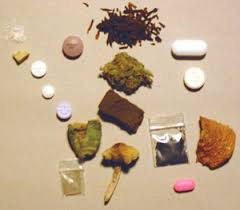Module 1 - Forensic Toxicology
Overview
 Module 1 Overview - Forensic Toxicology
Module 1 Overview - Forensic Toxicology
The sale and distribution of illegal drugs involves a global black market with an estimated retail value totalling more than US$ 320 billion. Law enforcement agencies have engaged in attempts to prevent the distribution and sale of illegal drugs since the growing problem was first recognized in the early 1960s.
Financial incentives drive the sale of illegal drugs: dealers want to get rich and be powerful. The result is often high levels of property crime, murder, and social disorder. Law enforcement agencies, therefore, work towards reducing the extent of the drug trade to prevent such crimes from becoming more frequent..
Each year, numerous injuries and deaths result from the use of illegal drugs. Forensic toxicology plays an important role in the investigation of such incidents and their related crimes.
The ingestion of a poison or toxin (usually by swallowing or injecting) can lead to life-threatening injuries and/or death. Ingestion may be accidental or deliberate, and it includes cases of suicide and murder. Accidental poisonings and suicidal acts stemming from the consumption of poisons and/or toxins are non-criminal matters. The deliberate poisoning of an individual or group of persons is a criminal matter that will typically result in a police investigation. The science of forensic toxicology has an important role in successfully investigating and prosecuting such crimes.
- Lesson 1 of this module examines the physiological effects of illegal drugs upon the human body. This lesson identifies some of the most common illegal drugs and describes the harmful side effects of drugs upon the human body. Also, this lesson explores the subject of drug-impaired driving.
- Lesson 2 describes various types of poisons and toxins and explains the physiological effects of poisons and toxins on the human body.
- Lesson 3 identifies and describes some of the toxicological tests used by forensic scientists.
- Lesson 4 examines the details of two historical crimes and one fictional crime that each relate to forensic toxicology.
Module Learner Objectives
By the end of Module 1, you should be able to…
- appreciate that the field of forensic toxicology involves the identification of various types of drug(s) and/or poison(s) found within an individual’s system
- recognize that illegal drugs have harmful side-effects upon the human body
- review the harmful effects of various types of illegal psychoactive drugs upon the human body (e.g., opiates, marijuana, barbiturates, cocaine, amphetamines)
- recognize that the illegal drug trade has a direct relationship upon other crimes and that it causes social disorder
- discuss the dangers of driving a motor vehicle while under the influence of drugs and the need for drug testing devices for police officers
- recognize that drugs, poisons, and toxins are extracted from the body using procedures that involve acid-base extraction
- understand the mechanics of various toxicology testing procedures used to screen for drugs or poisons (e.g., color testing, microcrystalline testing, immunoassay testing, gas chromatography)
- explain how the toxicological testing technique of mass spectrometry is used to confirm the presence of specific drugs or poisons within the human body
- identify various types of poisons (e.g., cyanide, carbon monoxide, arsenic, strychnine) and their harmful side-effects upon the human body
- analyze historical crime cases and/or fictional crime cases that involves forensic toxicology
|
Police reported approximately 109,000 drug violations in 2013. The rate of drug-related offences was 310 per 100,000 population, up 13% from 2003. |
- Statistics Canada website: www.statcan.ca
